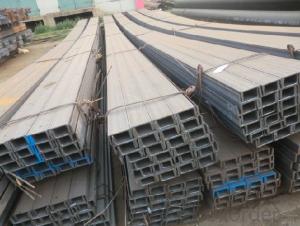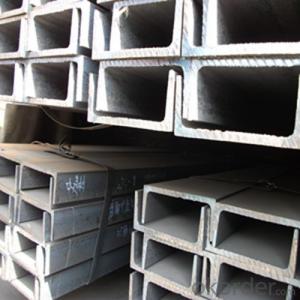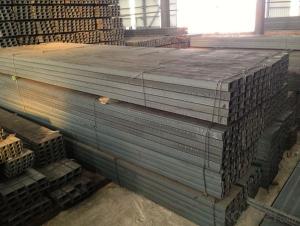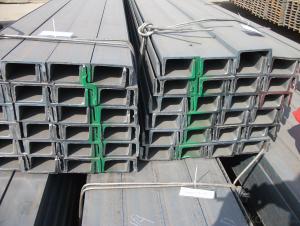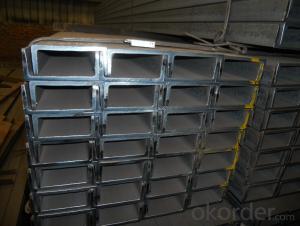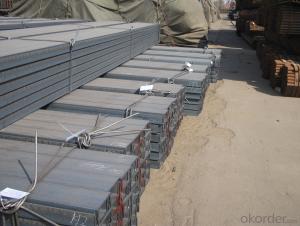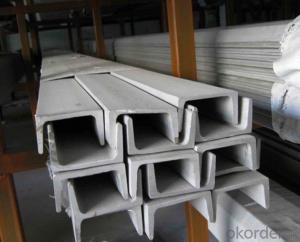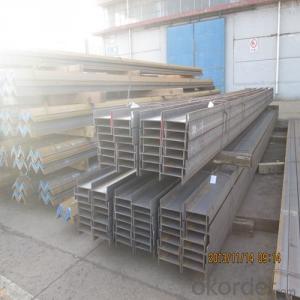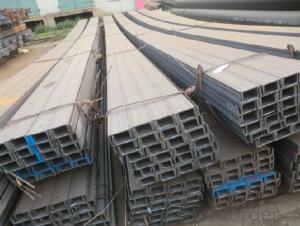Hot Rolled Steel U-Channel High Quality JIS/GB
- Loading Port:
- Tianjin
- Payment Terms:
- TT OR LC
- Min Order Qty:
- 50 m.t.
- Supply Capability:
- 10000 m.t./month
OKorder Service Pledge
OKorder Financial Service
You Might Also Like
Specification
Product Description:
OKorder is offering Hot Rolled Steel U-Channel High Quality JIS/GB at great prices with worldwide shipping. Our supplier is a world-class manufacturer of steel, with our products utilized the world over. OKorder annually supplies products to European, North American and Asian markets. We provide quotations within 24 hours of receiving an inquiry and guarantee competitive prices.
Product Applications:
Hot Rolled Steel U-Channel High Quality JIS/GB are ideal for structural applications and are widely used in the construction of buildings and bridges, and the manufacturing, petrochemical, and transportation industries.
Product Advantages:
OKorder's Hot Rolled Steel U-Channel High Quality JIS/GB are durable, strong, and resist corrosion.
Main Product Features:
· Premium quality
· Prompt delivery & seaworthy packing (30 days after receiving deposit)
· Corrosion resistance
· Can be recycled and reused
· Mill test certification
· Professional Service
· Competitive pricing
Product Specifications:
JIS U CHANNEL | Standard h | Sectional b | Dimension s | t | Mass: Kg/m |
| (mm) | (mm) | (mm) | (mm) |
|
50x25 | 50 | 25 | 3.0 | 6.00 | 2.37 |
75X40 | 75 | 40 | 3.8 | 7.00 | 5.30 |
75X40 | 75 | 40 | 4.0 | 7.00 | 5.60 |
75X40 | 75 | 40 | 4.5 | 7.00 | 5.85 |
75X40 | 75 | 40 | 5.0 | 7.00 | 6.92 |
|
|
|
|
|
|
100X50 | 100 | 50 | 3.8 | 6.00 | 7.30 |
100X50 | 100 | 50 | 4.2 | 6.00 | 8.03 |
100X50 | 100 | 50 | 4.5 | 7.50 | 8.97 |
100X50 | 100 | 50 | 5.0 | 7.50 | 9.36 |
|
|
|
|
|
|
125X65 | 125 | 65 | 5.2 | 6.80 | 11.66 |
125X65 | 125 | 65 | 5.3 | 6.80 | 12.17 |
125X65 | 125 | 65 | 5.5 | 8.00 | 12.91 |
125X65 | 125 | 65 | 6.0 | 8.00 | 13.40 |
|
|
|
|
|
|
150x75 | 150 | 75 | 5.5 | 7.30 | 14.66 |
150x75 | 150 | 75 | 5.7 | 10.00 | 16.71 |
150x75 | 150 | 75 | 6.0 | 10.00 | 17.90 |
150x75 | 150 | 75 | 6.5 | 10.00 | 18.60 |
150x75 | 150 | 75 | 6.5 | 10.00 | 24.00 |
|
|
|
|
|
|
200X80 | 200 | 80 | 7.5 | 11.00 | 24.60 |
Usage of JIS Channel Steel:
1.The JIS Channel Steel can be devided into two kinds, namely common channel steel and light channel steel. The sizes of hot rolled common channel steel range from 5# to 40#. Meanwhile, the channel steel can be divided into cold forming sectional equal channel steel, cold forming sectional unequal channel steel, cold forming inner edge channel steel and outer edge channel steel.
2.The steel u channel is usually used for arch-itechtural structure, and they could be welded in order to support or hang a vari-ety of facilities. They are also usually used in combination with I beam. The channel steel with sizes under 14# is usually applied to construction engineering, as purline, while the channel steel with sizes above 16# is more likely to be used in building vehicle chassis structure and mechanical structure. Furthermore, the channel steel in sizes above 30# are target at building bridge structure, as tension bar.
3.In a word, the channel steel must possess perfect welding property, riveting property and mechanical property and so on.
Applications of MS Channel:
The MS Channel can be applied to construction of warehouses, workshops, sport stadiums and car parks etc.The hot rolled channel steel belongs to carbon structural steel which is applied to in the field of construction and machinery.In details, the hot rolled channel steel is usually used for arch-itechtural structure, and they could be welded in order to support or hang a vari-ety of facilities. They are also usually used in combination with I beam. Generally,the hot rolled channel steel we supply must possess perfect welding property, riveting property and mechanical property and so on.
Package & Delivery of MS Channel:
1.The hot rolled channel steel will be packed in bundle with steel wire at each end of every bundle and color marking in order to help the customer to recognize his goods more easily at sight.
2. And the hot rolled channel steel could be loaded into 20ft or 40ft container, or by bulk cargo.If the weight of each bundle reaches more than 3.5 mt, the loading by break bulk cargo should be choosed.When the weight of each bundle reaches less than 3mt, the loading by container should be choosed.
3.As for the transportaion from mill to loading port, the truck will be usually used. And the maximum quantity for each truck is 40mt.
4.All in all, we could do in accordance with customer's request.
FAQ:
Q1: Why buy Materials & Equipment from OKorder.com?
A1: All products offered byOKorder.com are carefully selected from China's most reliable manufacturing enterprises. Through its ISO certifications, OKorder.com adheres to the highest standards and a commitment to supply chain safety and customer satisfaction.
Q2: How do we guarantee the quality of our products?
A2: We have established an advanced quality management system which conducts strict quality tests at every step, from raw materials to the final product. At the same time, we provide extensive follow-up service assurances as required.
Q3: How soon can we receive the product after purchase?
A3: Within three days of placing an order, we will begin production. The specific shipping date is dependent upon international and government factors, but is typically 7 to 10 workdays.
Q4: What makes stainless steel stainless?
A4: Stainless steel must contain at least 10.5 % chromium. It is this element that reacts with the oxygen in the air to form a complex chrome-oxide surface layer that is invisible but strong enough to prevent further oxygen from "staining" (rusting) the surface. Higher levels of chromium and the addition of other alloying elements such as nickel and molybdenum enhance this surface layer and improve the corrosion resistance of the stainless material.
Q5: Can stainless steel rust?
A5: Stainless does not "rust" as you think of regular steel rusting with a red oxide on the surface that flakes off. If you see red rust it is probably due to some iron particles that have contaminated the surface of the stainless steel and it is these iron particles that are rusting. Look at the source of the rusting and see if you can remove it from the surface.
Images:
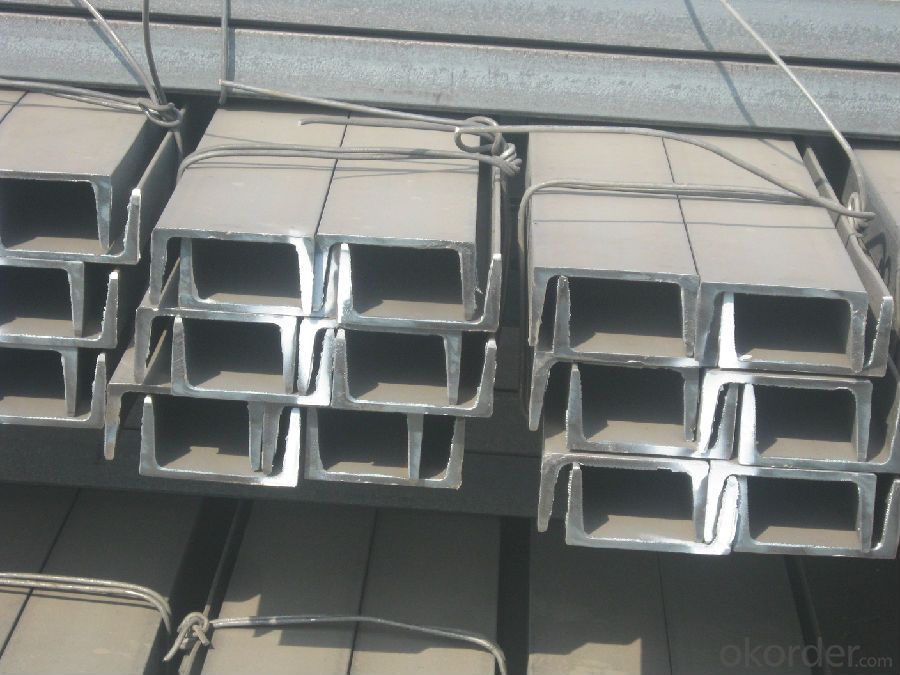
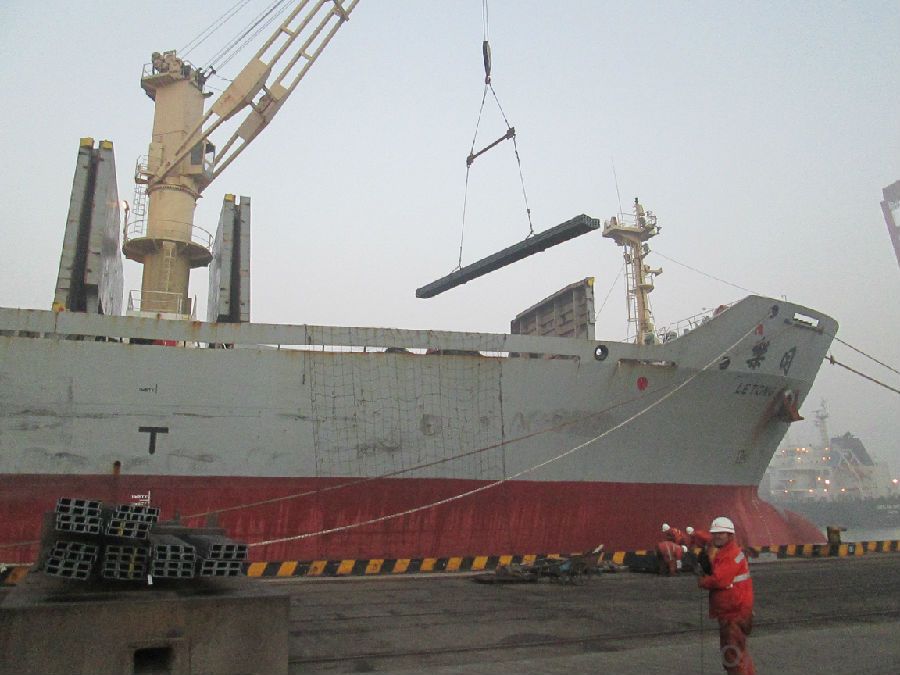
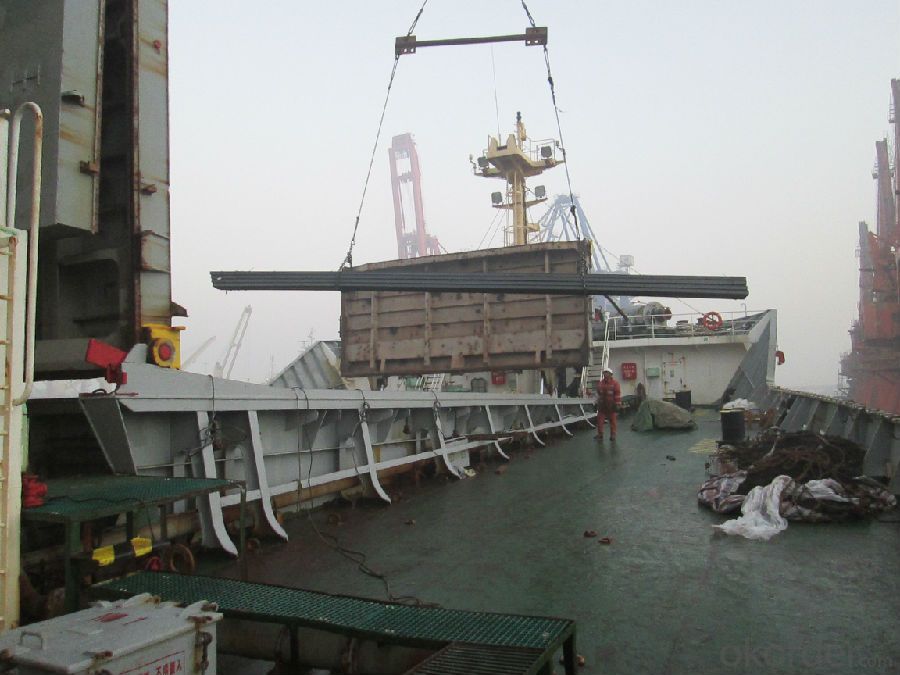
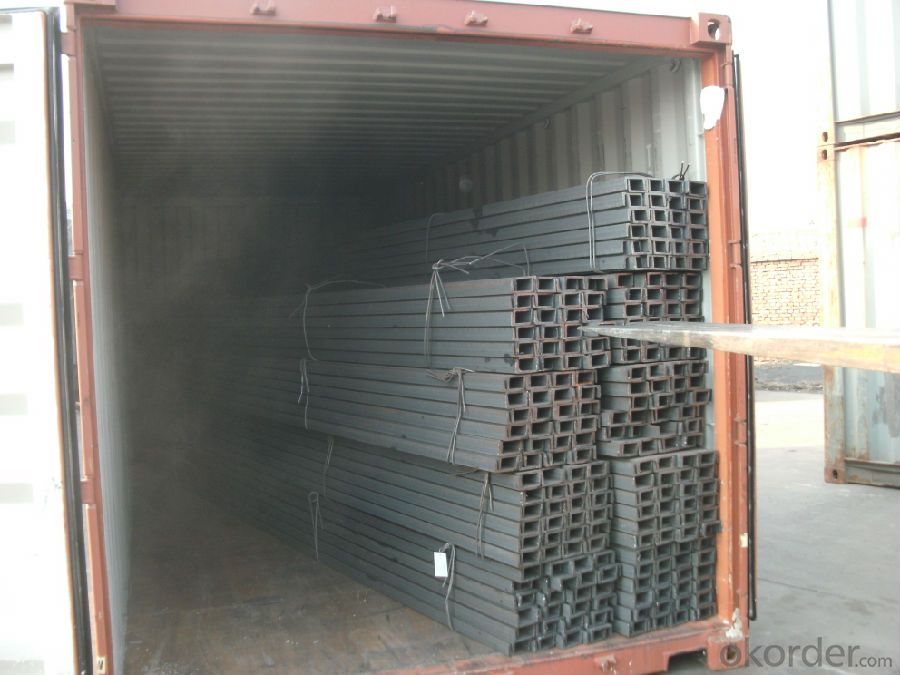
- Q: What is the load-carrying capacity of steel channels?
- The load-carrying capacity of steel channels depends on various factors such as the size, shape, and grade of the channel, as well as the support conditions and the type of load applied. It is typically determined through engineering calculations and testing to ensure structural safety and compliance with applicable building codes and standards.
- Q: How do steel channels compare to other materials like wood or aluminum?
- Steel channels have several advantages over other materials like wood or aluminum. Firstly, steel channels are known for their superior strength and durability. They are capable of withstanding heavy loads and are less prone to damage or deformation. This makes them suitable for applications that require structural integrity and stability, such as in construction or manufacturing industries. In comparison, wood channels may have a limited weight-bearing capacity and can be susceptible to rotting, warping, or termite infestation, while aluminum channels may not be as strong as steel and may not be suitable for heavy-duty applications. Secondly, steel channels offer excellent fire resistance. Unlike wood, which is a combustible material, steel channels do not contribute to the spread of fire. This makes them a safer option in areas where fire safety is a concern, such as commercial buildings or industrial facilities. Another advantage of steel channels is their low maintenance requirements. Steel is resistant to corrosion, rust, and decay, which means that steel channels do not need regular treatment or painting to maintain their structural integrity. In contrast, wood channels may require periodic staining, sealing, or repainting to prevent deterioration, while aluminum channels may need to be coated or anodized to protect against corrosion. Moreover, steel channels are readily available and cost-effective. Steel is a widely used material in various industries, making steel channels easily accessible. Additionally, the production of steel channels is efficient and cost-effective, making them a more affordable option compared to other materials like wood or aluminum. However, it is important to note that each material has its own unique properties and advantages. Wood, for example, offers a natural and aesthetic appeal that steel cannot replicate. Aluminum, on the other hand, is lightweight and has good thermal conductivity, making it suitable for certain applications. In summary, steel channels are a strong, durable, fire-resistant, low-maintenance, and cost-effective option compared to other materials like wood or aluminum. They are particularly well-suited for applications that require strength, longevity, and fire safety.
- Q: How do steel channels compare to other types of steel profiles?
- Steel channels are a specific type of steel profile that offers several advantages when compared to other types of steel profiles. Firstly, steel channels are known for their high strength and durability. The U-shaped design of steel channels allows them to support heavy loads and resist bending or warping, making them ideal for structural applications. This strength also helps them withstand extreme weather conditions and other external forces, ensuring their longevity. Secondly, steel channels have excellent versatility. They can be easily customized and fabricated to meet specific project requirements. This flexibility allows for various applications, including structural support, framing, and reinforcement. Steel channels also come in a range of sizes and thicknesses, making them suitable for projects of different scales. Furthermore, steel channels exhibit high corrosion resistance. They are commonly made from carbon or stainless steel, both of which have natural anti-corrosion properties. This makes steel channels suitable for outdoor and marine environments where exposure to moisture or chemicals is prevalent. Additionally, steel channels are cost-effective. Steel is a widely available and abundant material, making it relatively affordable compared to other construction materials. Moreover, the durability and longevity of steel channels result in reduced maintenance costs over time, making them a cost-efficient choice for many applications. Lastly, steel channels offer ease of installation. Their uniform shape and standardized dimensions make them simple to work with, reducing installation time and labor costs. This ease of installation also makes steel channels a preferred choice for DIY projects or small-scale constructions. In conclusion, steel channels have several advantages over other types of steel profiles. Their strength, versatility, corrosion resistance, cost-effectiveness, and ease of installation make them a popular choice for a variety of construction projects.
- Q: Can steel channels be used in load-bearing walls?
- Steel channels can indeed be utilized in load-bearing walls. Their high strength-to-weight ratio makes them a popular choice for providing structural support in construction projects. Load-bearing walls often benefit from the added stability and support that steel channels offer. These channels possess exceptional load-bearing capabilities, enabling them to withstand heavy vertical and horizontal loads. Moreover, integrating them into the wall structure is a straightforward process, making them a practical option for load-bearing applications. To guarantee compliance with building codes and regulations, it is crucial to seek input from a structural engineer or construction professional when selecting the appropriate steel channels for the desired load-bearing capacities.
- Q: Can steel channels be used for residential construction projects?
- Yes, steel channels can be used for residential construction projects. Steel channels are commonly used in construction due to their strength, durability, and versatility. They are often used for framing, support structures, and other applications in residential buildings.
- Q: 14 of channel steel and 12 of I-beam which force?
- The mechanical parameters of 14 channel steel are larger than that of 12, including the moment of inertia, the radius of inertia and the coefficient of cross section. Therefore, the same length of 14 channel steel can bear a greater force.
- Q: How do steel channels contribute to the overall efficiency of a building?
- Steel channels contribute to the overall efficiency of a building in several ways. Firstly, they provide structural support, enhancing the strength and stability of the building. This allows for the construction of taller and larger structures, maximizing the use of space. Additionally, steel channels can be used to create open floor plans, allowing for flexible and versatile layouts. Moreover, steel channels are lightweight yet durable, making them easy to transport and install, reducing construction time and costs. Lastly, steel channels have high resistance to fire, corrosion, and pests, ensuring the long-term durability and safety of the building.
- Q: How do steel channels contribute to the flexibility of architectural designs?
- Steel channels contribute to the flexibility of architectural designs by providing a strong and versatile structural element. These channels can be easily molded, bent, and cut into various shapes and sizes, allowing architects to create unique and innovative designs. Additionally, steel channels can be used to support heavy loads and provide stability, making them suitable for a wide range of architectural applications.
- Q: How do steel channels perform under cyclic loading?
- Steel channels have a tendency to perform well when subjected to cyclic loading due to their inherent strength and durability. The unique shape of steel channels, which includes flanges and a web, offers structural stability and resistance against bending, shearing, and torsion forces. This makes them particularly suitable for applications where cyclic loading is present, such as bridges, industrial buildings, and machinery. When subjected to cyclic loading, steel channels demonstrate a high fatigue strength, meaning they can endure repeated loading and unloading cycles without significant deformation or failure. This is primarily due to the material properties of steel, which possess high elasticity and toughness. Additionally, steel channels possess a strong resistance to corrosion, which further enhances their performance under cyclic loading conditions. Furthermore, engineers have the ability to design steel channels with specific dimensions and cross-sections in order to optimize their performance under cyclic loading. By considering factors such as the expected magnitude and frequency of cyclic loading, as well as the material properties of the steel being used, engineers can calculate the necessary size and shape of the channel. This ensures that the steel channel can effectively distribute and withstand the cyclic loads, minimizing the risk of fatigue failure. However, it is important to acknowledge that the performance of steel channels under cyclic loading can be influenced by various factors, including the quality of the steel, the design and manufacturing process, and the installation and maintenance practices. Therefore, proper material selection, design considerations, and regular inspections are necessary to ensure the long-term performance and safety of steel channels under cyclic loading.
- Q: What are the considerations for steel channel bracing?
- When considering steel channel bracing, there are several important factors to take into account. Firstly, it is essential to evaluate the structural requirements of the building or structure that the bracing will be supporting. This includes assessing the loads and forces that will be exerted on the bracing system, as well as understanding the specific design codes and standards that need to be followed. It is crucial to ensure that the bracing system is able to withstand the anticipated loads and provide the necessary stability to the structure. Secondly, the material properties of the steel channel used for bracing must be carefully considered. This includes assessing the strength, stiffness, and ductility of the steel channel. It is important to select a steel channel that has the appropriate properties to resist the loads and forces that will be imposed on the bracing system. Additionally, factors such as corrosion resistance and fire resistance should also be taken into account. Another consideration is the design and layout of the bracing system. The spacing and arrangement of the steel channel braces should be carefully planned to ensure adequate support and stability. The bracing system should be designed to distribute the loads effectively and minimize any potential for buckling or instability. Additionally, the connections between the steel channel braces and the supporting structure should be robust and capable of transferring the loads efficiently. In addition to the design and layout, the installation of the steel channel bracing is a crucial consideration. Proper installation techniques should be followed to ensure that the bracing system is installed correctly and securely. This includes using appropriate fasteners and ensuring that the bracing is properly aligned and connected. Lastly, it is important to consider any potential limitations or restrictions that may impact the steel channel bracing. This could include factors such as available space for installation, access for maintenance or repair, or any specific environmental conditions that could affect the performance of the bracing system. Overall, careful consideration of the structural requirements, material properties, design and layout, installation techniques, and any limitations or restrictions will ensure that the steel channel bracing is effective and provides the necessary support and stability for the structure.
Send your message to us
Hot Rolled Steel U-Channel High Quality JIS/GB
- Loading Port:
- Tianjin
- Payment Terms:
- TT OR LC
- Min Order Qty:
- 50 m.t.
- Supply Capability:
- 10000 m.t./month
OKorder Service Pledge
OKorder Financial Service
Similar products
Hot products
Hot Searches
Related keywords
